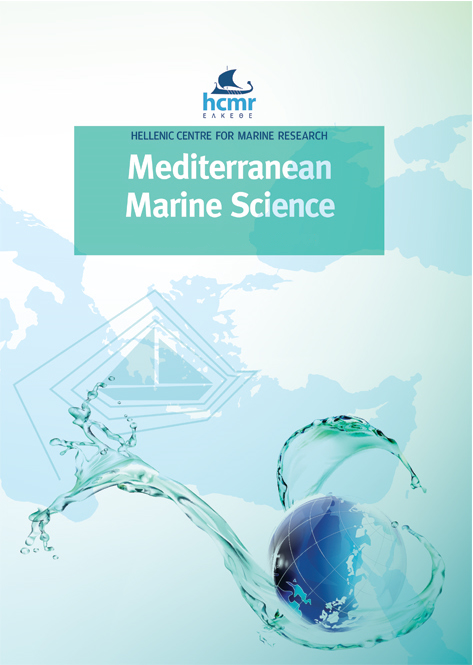Unexpected massive enmeshments of the Sharpchin barracudina Paralepis coregonoides Risso, 1820 in mesopelagic sediment traps in the Levantine Basin, SE Mediterranean Sea
Περίληψη
This study reports exceptional penetrations of the Sharpchin Barracudina Paralepis coregonoides into pelagic, open-sea sediment traps in the Levant Basin of the SE Mediterranean Sea. This first substantiated record of the species at the Levant Basin has been observed in two sediment traps at 180 and 280 m depth, 50 km offshore the coast of Israel. Over one year of deployment (November 2016 till November 2017), 483 adult individuals have been repeatedly entrapped inside the automatic sediment traps that were covered with a 25 mm baffler mesh for the first half year and then replaced with a smaller 1 cm mesh for the second half. This undesirable catch of such an elusive and understudied species provided a unique opportunity to revise its distribution, abundance and genetic divergence. The continuous entrapment throughout the year of sexually mature individuals has confirmed that this species is common to the SE Mediterranean. In order to avoid unwanted entrapments that disrupt biogeochemical sediment studies, the installation of small mesh size nets on the conventional sediment trap openings must be considered in the pelagic zone of the SE Mediterranean, and probably elsewhere.
Λεπτομέρειες άρθρου
- Πώς να δημιουργήσετε Αναφορές
-
STERN, N., ALKALAY, R., LAZAR, A., KATZ, T., WEINSTEIN, Y., BERMAN-FRANK, I., & HERUT, B. (2020). Unexpected massive enmeshments of the Sharpchin barracudina Paralepis coregonoides Risso, 1820 in mesopelagic sediment traps in the Levantine Basin, SE Mediterranean Sea. Mediterranean Marine Science, 21(1), 47–51. https://doi.org/10.12681/mms.20747
- Τεύχος
- Τόμ. 21 Αρ. 1 (2020)
- Ενότητα
- Short Communication
Authors who publish with this journal agree to the following terms:
- Authors retain copyright and grant the journal right of first publication with the work simultaneously licensed under a Creative Commons Attribution Non-Commercial License that allows others to share the work with an acknowledgement of the work's authorship and initial publication in this journal.
- Authors are able to enter into separate, additional contractual arrangements for the non-exclusive distribution of the journal's published version of the work (e.g. post it to an institutional repository or publish it in a book), with an acknowledgement of its initial publication in this journal.
- Authors are permitted and encouraged to post their work online (preferably in institutional repositories or on their website) prior to and during the submission process, as it can lead to productive exchanges, as well as earlier and greater citation of published work (See The Effect of Open Access).













